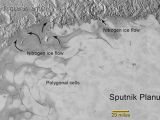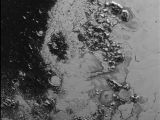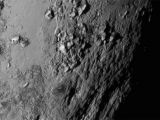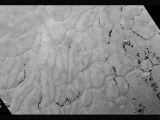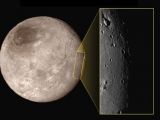When they launched their New Horizons probe to the farther end of the Solar System, NASA scientists knew full well the mission would forever change our view of the Pluto system.
What they didn't expect was to find that, rather than being merely a frozen alien world, dwarf planet Pluto actually displays stunningly diverse geology. Hence their surprise when views of odd-looking landscapes started pouring in. “We can say that our expectation has been more than surpassed,” confesses NASA researcher John Grunsfeld.
If you've been keeping tabs on New Horizons' adventures at the edge of the Solar System, chances are you've heard that, soon after its flyby of Pluto, the spacecraft beamed back images of mountain ranges and icy plains on the dwarf planet's surface.
Well, it just so happens that, apart from these frozen peaks and terrains, Pluto accommodates for flowing nitrogen ice glaciers. These alien glaciers reside in a region dubbed Sputnik Planum, in turn located in the western half of the orb's heart-shaped feature nicknamed Tombaugh Regio after Pluto discoverer American astronaut Clyde Tombaugh.
A detailed view of the nitrogen glaciers resting on the surface of Pluto is available in the gallery below. The image shows the glaciers working their way into the nearby rugged terrain.
Flowing glaciers have so far only been documented on our planet and on neighboring Mars, so finding such structures on Pluto was quite a surprise. “We've only seen surfaces like this on active worlds like Earth and Mars,” says NASA scientist John Spencer.
Lo and behold, Pluto has a halo
While moving away from the Pluto system after having completed its flyby of the dwarf planet, the New Horizons spacecraft turned around to have one more look at the orb and captured a gorgeous view of sunlight hitting its atmosphere.
The image, also included in the gallery below, shows two distinct layers of haze encompassing Pluto. NASA scientists say one of these layers appears to reach an altitude of about 30 miles (50 kilometers), while the other towers above the celestial body's surface at roughly 50 miles (80 kilometers).
Researchers suspect these hazes that the New Horizons probe imaged around dwarf planet Pluto are the result of ultraviolet light breaking up methane gas particles in the orb's atmosphere and allowing for the formation of complex hydrocarbon gases.
The newly formed hydrocarbon gases then fall to the lower parts of the Pluto's atmosphere. Here, they are exposed to low temperatures and condense, forming particles. Finally, these particles get together to form the hazes spotted by New Horizons.
Interestingly, researchers say the same hydrocarbons forming hazes around Pluto also give the dwarf planet its reddish color. “The hazes detected in this image are a key element in creating the complex hydrocarbon compounds that give Pluto’s surface its reddish hue,” says scientist Michael Summers.
In case anyone was wondering, NASA's New Horizons probe is now journeying deeper and deeper into the Kuiper Belt. Eventually, it will leave our Solar System and enter interstellar space. Meanwhile, it's keeping busy communicating with base and delivering the data and the images it obtained during its historic flyby of the Pluto system.
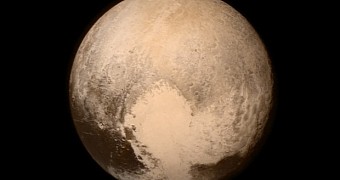
 14 DAY TRIAL //
14 DAY TRIAL // 


